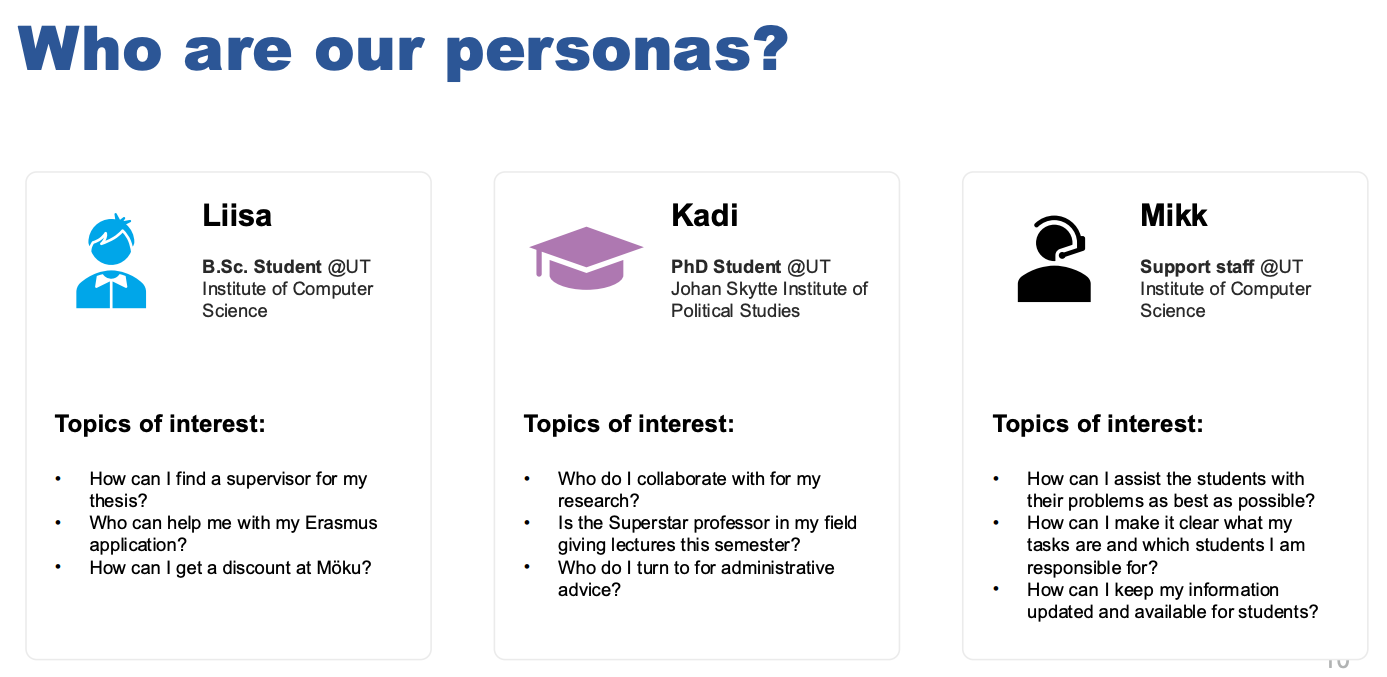Course: Digital Product Management Industry Project
Team UT Web: Mihhail Sokolov (Master's in Data Science), Serle Kirsipuu (Conversion Master in IT), Yucui Wu (Master's in Computer Science), Zhou Han (Master's in Computer Science)
Semester: Autumn 2024
The Challenge
The University of Tartu’s website serves as a vital resource for diverse stakeholders, from alumni and researchers to prospective students and continuous learners. Central to this platform are staff contact cards, which currently provide basic details like name, email, and occupation but lack visual appeal and fail to meet the diverse needs of users. Researchers, for instance, wish to display their projects and publications, while other staff groups require customization to highlight role-specific information.
The challenge lies in redesigning these contact cards to enhance functionality, aesthetics, and accessibility, while automating content updates to reduce maintenance effort.
Process and Solution
The team began with a comprehensive stakeholder analysis, identifying key groups such as academic staff, support personnel, web designers, and external users. Extensive user research, including interviews and surveys, shed light on varied requirements across personas. The team developed three personas to represent the diverse user groups: Liisa, a Bachelor’s student; Kadi, a PhD student; and Mikk, an administrative staff member. Each of these personas has their own set of needs, pain points and goals.

By synthesizing insights from research, the team focused on the following "How Might We" question: “How might we show relevant information about university employees while also making it easy and intuitive to access, and easy to maintain?”
The team devised a two-tiered approach to redesign the contact card system:
- Contact Cards: These are streamlined for clarity and consistency, presenting key details like email, phone number, and role in a visually appealing format.
- Personal Webpages: An extended profile for academic and non-academic staff that includes research publications, supervision topics, teaching records, and customizable sections. This structure accommodates diverse needs without overwhelming users.
Some of the key features of the solution include:
• Teaching Section: This accordion-style component expands to display the courses taught by a professor, with direct links to course pages for easy access.
• Supervision Topics: A dedicated section listing the supervision topics offered by professors, aiding students in finding relevant advisors for their theses or research projects.
• Academic Record: A comprehensive view of an academic staff member’s publications, projects, and prior thesis supervisions. This section integrates with the ETIS database for automated updates, reducing manual effort.
• Similar People Tab: A navigation aid that highlights other staff members with related roles or expertise, fostering collaboration and easier connections.
• Time booking: Some employees might have restricted times at which they accept students for counselling (e.g. psychologists). Having an easy link to the university booking system from a person’s personal web page can be quite useful.

User testing demonstrated the effectiveness of the new design. Participants praised the intuitive layout, improved search features, and accessibility enhancements. Academic staff appreciated the ability to showcase research and teaching topics, while students valued the streamlined navigation.